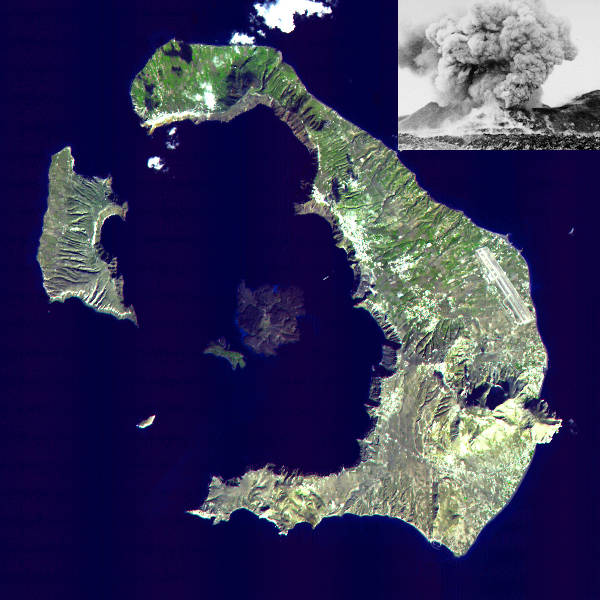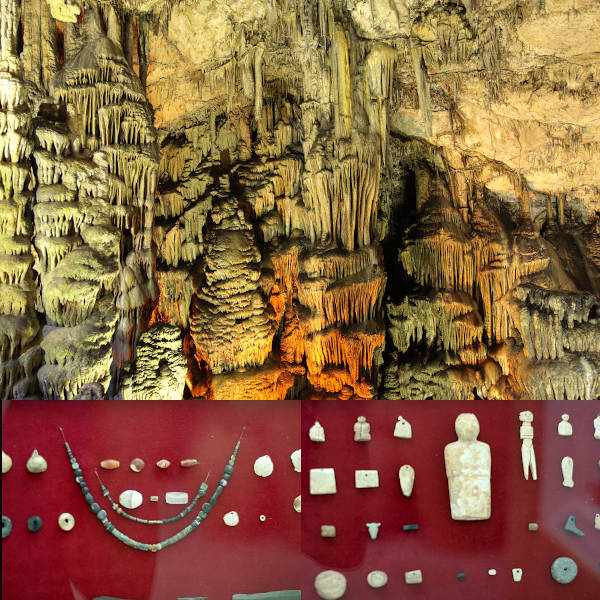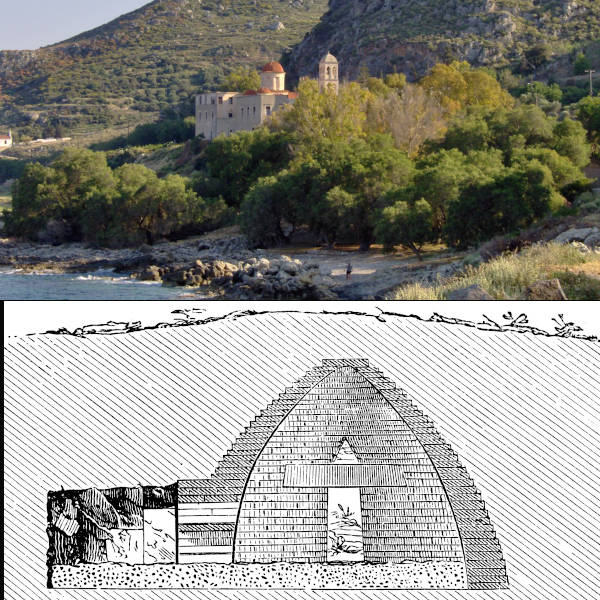DNA spotlight
Minoan Civilization
The Minoan Civilization was an advanced maritime race who once controlled the trade of the mediterranean. They were centered around the island of Crete and reached their peak around 1700 BC. The Minoan King Minos was said to have built a labyrinth to cage a monster - half man and half bull - the Minotaur was the result of a union between a sacred bull and the King's unfaithful wife. Today the Palace at Knossos makes us wonder if this was once the home of the Minotaur, or if it was the inspiration for the Greek legend. The Minoans invented numerous breakthrough building technologies which would incorporate columns, light-wells and terraces to bring light deep into enormous structures. Cobblestone streets and an advanced underground drainage system was built at Knossos a thousand years before the Rome. The palace had 1500 interconnected rooms covered with detailed frescos as shown. A local sport very popular to Minoans was bull jumping where athletes had to execute jumps over and on a charging bull - a true sign of courage and gallantry.

The Minoan civilization spread to nearby islands including Santorini - also known as Thera - which has been thought to link to the legend of Atlantis. The island is a remnant of its past - in 1628 BC one of the most violent volcanic explosions occured at the center of Santorini leaving much of what had been lush farmland under water turning Santorini into a few smaller islands. The wealthy Minoan seaport of Akrotiri, on what had been the outer rim of the island was destroyed. It is believed the explosion led to a large earthquake, tidal waves, choking ash and fires which had an impact all the way to Crete. As the Minoans were a sea power, the Thera eruption caused significant hardship for the Minoans. They abandoned many settlements and within 200 years were conquered by the warlike Mycenaeans. It is said the cataclysm had global effects as volcanic winter was documented in China causing a yellow fog, dim sun and frost in July. Likewise Ancient Egyptian records mention apocalyptic rainstorms which devastated much of Egypt.

Natural sanctuaries such as caves on the Lasithi Plateau in Eastern Crete played an important role for Minoans, particularly during the Middle Bronze Age. Caves served as sanctuaries, were used for cult practices as well as burials. The Diktaian Cave, near the village of Psychro is reputedly the birthplace of Zeus according to Greek Mythology. Zeus is said to have hid in this cave after abducting Europa, the Phoenician princess and mother of King Minos. The nearby Hagios Charalambos cave was used as a burial site but also contained figurines, seals, weapons and jewelry. These photos show many of the artifacts found among these archaeological remains. The number of bodies found indicates this cave was a very special site used by the majority of the plateau rather than just the small local community.

The Minoan Prepalatial cemetery near the Monastery of Odigitria (Moni Odigitria) near Phaistos lies halfway between the Mesara Plain and the south coast in South-Central Crete. It is a complex of buildings, minor structures and open courtyards. There are two circular tholos/beehive tombs. These are burial structures characterized by having a false dome created by positioning smaller rings of bricks of stones on top of one other. South of one of these tombs is an ossuary pit full of skeletons and skulls carefully placed with very little soil between them. Among the skeltons were pottery and stone vases. 23 seals were recovered under the bones of up to 55 individuals of which 47 almost-complete skulls were found. Five of these samples had teeth which yielded enough DNA for genomic analyses.
Sample: Minoan Lasithi
- Sample ID: I0071
- Year: 2000 BC
- Sex: Female
- Location: 35.1810,25.4410
Sample: Minoan Lasithi
- Sample ID: I0073
- Year: 2000 BC
- Sex: Male
- Location: 35.1810,25.4410
Sample: Minoan Lasithi
- Sample ID: I0074
- Year: 2000 BC
- Sex: Female
- Location: 35.1810,25.4410
Sample: Minoan Lasithi
- Sample ID: I9005
- Year: 2000 BC
- Sex: Female
- Location: 35.1810,25.4410
Sample: Minoan Moni Odigitira
- Sample ID: I9127
- Year: 2000 BC
- Sex: Female
- Location: 35.3220,25.1001
Sample: Minoan Moni Odigitira
- Sample ID: I9128
- Year: 2000 BC
- Sex: Female
- Location: 35.3220,25.1001
Sample: Minoan Moni Odigitira
- Sample ID: I9129
- Year: 2000 BC
- Sex: Female
- Location: 35.3220,25.1001
Sample: Minoan Moni Odigitria
- Sample ID: I9130
- Year: 2000 BC
- Sex: Male
- Location: 35.3220,25.1001
Sample: Minoan Moni Odigitria
- Sample ID: I9131
- Year: 2000 BC
- Sex: Female
- Location: 35.3220,25.1001



